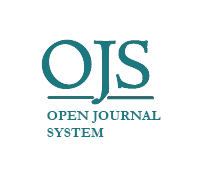HERDING BEHAVIOUR AROUND FED FUND RATE ANNOUNCEMENTS IN SOUTHEAST ASIA
DOI:
https://doi.org/10.22219/jrak.v10i1.10652Keywords:
Fund Fed Rates, Herding, Southeast AsiaAbstract
This study aims to detect herding behavior in the Southeast Asian capital market after the announcement of the fed fund rate in 2018. The population used in this study are all companies listed on the Indonesia, Malaysia, Thailand, Vietnam, Philippines stock exchanges. The sample collection technique in this study used purposive sampling. The method used to detect herding behavior using CSAD was developed by Chang, Cheng, and Khorana (2000). The results of the study found a herding behavior. . Empirical test results from the regression showed the coefficient γ2 is negative and meets the level of confidence at the level of 95%. The ability of the regression results to meet the expected level of confidence, then empirically this can conclude the existence of herding behavior. This means supporting the hypothesis in Hi, thus in aggregate it appears that during the observation period herding behavior occurred after the Fed Fund Rate 2018 was announcedKeywords : Fund Fed Rates, Herding, Southeast Asia
Downloads
Download data is not yet available.
Downloads
Published
2020-03-30
Issue
Section
Articles
License

Jurnal Reviu Akuntansi dan Keuangan is licensed under a Creative Commons Attribution-NonCommercial-ShareAlike 4.0 International License.
Authors who publish with this journal agree to the following terms:
- Authors retain copyright and grant the journal right of first publication with the work simultaneously licensed under a Creative Commons Attribution-NonCommercial-ShareAlike 4.0 International License that allows others to share the work with an acknowledgement of the work's authorship and initial publication in this journal.
- Authors are able to enter into separate, additional contractual arrangements for the non-exclusive distribution of the journal's published version of the work (e.g., post it to an institutional repository or publish it in a book), with an acknowledgement of its initial publication in this journal.
- Authors are permitted and encouraged to post their work online (e.g., in institutional repositories or on their website) prior to and during the submission process, as it can lead to productive exchanges, as well as earlier and greater citation of published work (See The Effect of Open Access).










